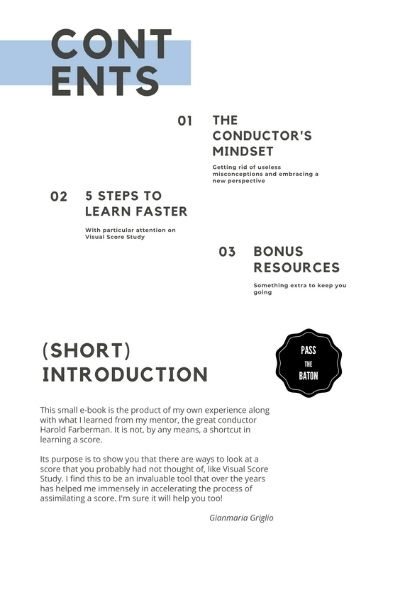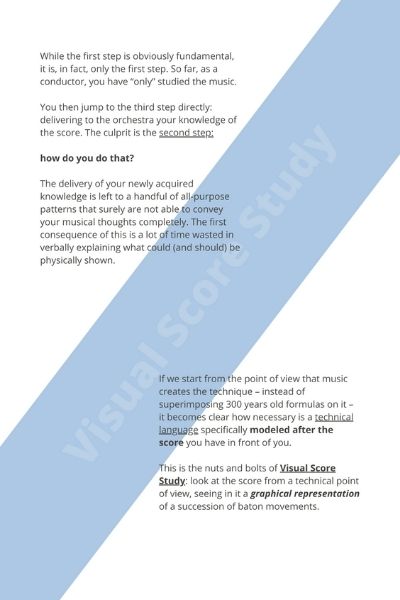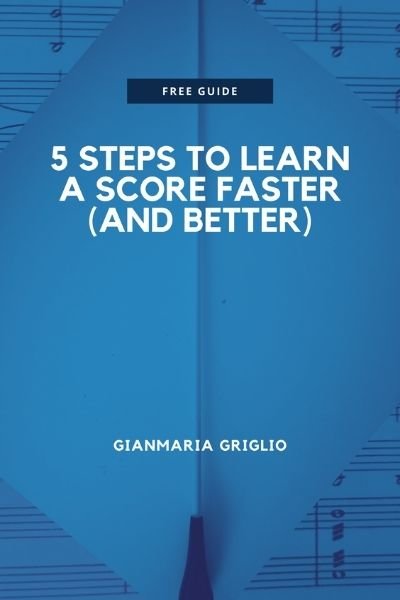Pass the baton
A unique course that will give you a new perspective on the art of conducting
Music creates the technique
A new perspective
There’s always been a lot of talking about the “magic” of conducting: truth is that, like in all other arts, the technical aspect of it is something that everyone can learn and perfect, but it’s also something that needs to go beyond beating repetitive patterns endlessly.
It was a revelation to learn from one of my teachers, the great conductor Harold Farberman, that there was a practical approach to replace formula patterns and create a new technique from the music itself.
This is what I’ve tried to honor in this video series created for the iClassical-Academy: you will learn how to incorporate new strokes based on what’s on the page, accounting for dynamics, orchestration, length, character, and pitch of the notes. Your conducting technique will be shaped by the music itself, and you will be fully conscious of the direct connections that lie between gestures and sound.
NEW: you can now get a certificate of completion. This is the first of its kind on the iClassical-Academy platform. Take a look!
Body placement to visual score study
From the score to the podium
10 chapters, practical exercises, and examples with scores, will show you, through a bar-by-bar analysis of excerpts ranging from Mozart to Mahler and Copland, how to build your own technique in the most logical and effective way
Chapter 1
Body and baton placement
We start our journey by exploring the conductor’s space, body placement, and, of course, the baton. Good habits, bad habits and a first mention of pulse, the only thing any orchestra in the world truly needs.
Chapters 2 & 3
Different types of strokes and patterns
Baton strokes are the connecting movements inside a pattern. They can be vertical, horizontal or diagonal, straight or curved. The most important thing is that they are clear.
Chapters 4 & 5
The left hand and cueing
The left hand should be able to do everything that the right hand does. When and how should you switch between one and the other? Excerpts from Tchaikovsky‘s Symphony n.6 and Debussy‘s “Prélude à l’après-midi d’un faune”
Chapters 6 & 7
Tempo, upbeats and mixed meters
What’s the tempo? Is there a right tempo? How do you conduct mixed meters like 5/8 or 7/8? What about the upbeats? Practical examples with Beethoven‘s fifth symphony and Copland‘s Appalachian Spring
Chapters 8 & 9
Breaking the patterns
Breaking the patterns: how to do it while keeping clarity. Practical examples and analysis with excerpts from Beethoven‘s Symphony n.1, Mozart‘s Symphony n.40, Tchaikovsky‘s Symphony n.6, and Mahler‘s Symphony n.6
Chapter 10
Rehearsal talk
Conducting technique is not the only thing a conductor should master: how to address an orchestra verbally is very important and knowing what to avoid can save you a lot of precious rehearsal time.
Gianmaria Griglio is an intelligent, exceptional musician. There is no question about his conducting abilities: he has exceptionally clear baton technique that allows him to articulate whatever decisions he has made about the music.
Podium notes
Pass the baton blog
A lot of the material that I used to create the different chapters of my conducting course made it into these posts about conducting technique. Take a look!
Accompanying singers
Being able to recognize the voice type you are working with is crucial to a successful performance.
Accompanying instrumentalists
One of the things that conductors have to face all the time is accompanying a soloist. It’s still a listen and react process but the technical aspects can be different, in some ways, from conducting, let’s say, a symphony.
Things to consider are balance, rests, and, of course, the musical partnership between the conductor and the soloist.
How to conduct syncopations
It is rather normal for conductors early in their studies to find themselves tricked by the change of accents within the bar, sometimes following the syncopation instead of remaining anchored to the basic pulse. In this post, we’ll see a few examples of syncopated rhythms and some exercises you can practice at home.
Ready to become a better conductor?
10 chapters
from body posture to visual score study
Technical solutions
how-to and what to avoid
Practical examples
from Mozart to Copland, bar-by-bar technical analysis
Do you still have questions about the course?
Drop me a line!
Dialogue is an essential part of any script
Credits:
Recorded at the Fenix Music Factory in Rotterdam, NL – Special thanks to Henk Hupkes
Filmed by Miralem Smajlovic
Sound editing: @noirtdc










